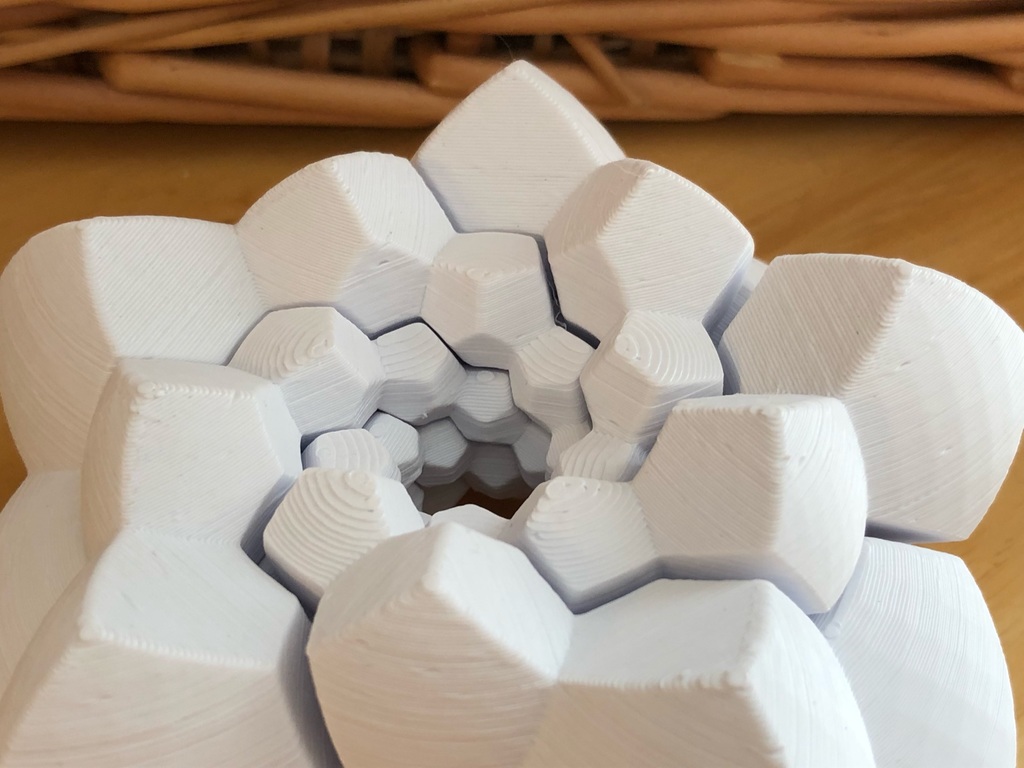
Hopf Fibration Rings of the 120-Cell
thingiverse
This print-in-place “120-cell Linked Rings” sculpture offers a tactile way to experience the rings of the Hopf fibration of the four-dimensional 120-cell. See here for video: https://youtu.be/87hM1U-2sWY The 120-cell is one of six regular convex four-dimensional shapes. It is composed of 120 dodecahedral cells. Because the shape exists in four-dimensional space, special mathematical techniques are required to visualize it. This sculpture is made using the cell-centered stereographic projection method to create a three-dimensional “shadow” of the original four-dimensional shape. Even these “simplified” three-dimension shapes are difficult to fully understand, so it is helpful to deconstruct them further. The 120-cell can be partitioned into twelve 10-cell great circle rings. The rings are related to the Hopf fibration of the 120-cell. This sculpture contains 60 dodecahedral cells clustered in to six of these 10-cell rings, representing half of the full 120-cell. Because five of the rings wrap around and hide the sixth ring, it is difficult to see their relative positioning. The “120-cell Fused Rings” object contains all 60 cells, but you can only see the outer 50. In the “120-cell Linked Rings” object, the six rings have been separated and small supports have been added between the rings to allow printing with a well-calibrated FDM printer. Once printed, the rings can be separated by gently twisting them apart to reveal the inner ring. This project was inspired by the book "Visualizing Mathematics with 3D Printing" by Henry Segerman.
With this file you will be able to print Hopf Fibration Rings of the 120-Cell with your 3D printer. Click on the button and save the file on your computer to work, edit or customize your design. You can also find more 3D designs for printers on Hopf Fibration Rings of the 120-Cell.
